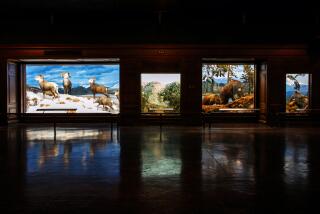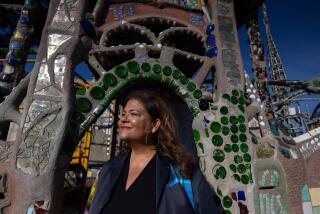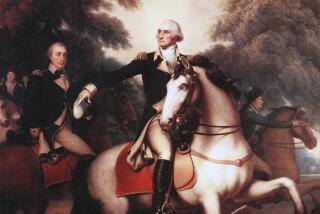Imaginative show at the Center for Land Use Interpretation looks at how we memorialize our presidents
- Share via
At a time when the word “curated” is as likely to describe the garnishes in your ham sandwich as it is to address the thinking behind an art exhibition, it’s refreshing to come across “Executive Decisions: The Personal Landscape Legacy of American Presidents” at the Center for Land Use Interpretation in Culver City.
Smartly focused and radically open-ended, the exhibition brings together a fascinating mass of data that incites — and inspires — visitors to think for themselves.
Four touch-screen monitors deliver the goods: About 800 pictures of every place every U.S. president has ever lived — as well as the places each of them is buried. Concise captions accompany the photographs of cabins, plantations, apartments, farmhouses, beach retreats, backyard graves and national cemeteries.
The stories that unfold as you wend your way through 284 years of history (George Washington was born in 1732) are complex and multilayered. Conflict and craziness seem to be essential to the life-stories of the 43 exemplary citizens, especially as the rudiments of their daily lives are transformed into the stuff of legends.
Facts are often elusive. No one knows, for example, where Chester A. Arthur was born. The 1953 replica of his parents’ home (which stands five miles north of Fairfield, Vt., near the Canadian border) was based on a photograph of the house his parents moved into in 1830 — a year after he was born.
In the 1880s, many Democrats contended that Arthur was born in Dunham, in Quebec. His tombstone, in Menands, N.Y., compounds the confusion, listing his birthdate as 1830.
Some of the sites themselves are similarly complicated.
William McKinley’s birth home in Niles, Ohio, seems to have taken on a life of its own. After McKinley moved out, the two-story wood-plank home was cut in half and moved to two locations: An amusement park and the back lot of a bank. In 1909, a real estate developer reunited the two halves as the centerpiece of a housing development. It burned down in 1937. That location is now a parking lot.
Back in Niles, a replica home was built where McKinley’s original birth home stood. Known as the McKinley Birthplace Home and Research Center, it bears little resemblance to the real thing. And it is dwarfed by the National McKinley Birthplace Memorial (which houses the McKinley Memorial Library and the McKinley Museum), a massive marble structure on a five-acre lot up the street.
That’s not even the tip of the iceberg.
It’s great fun to scroll your way through the scenes and stories introduced by the exhibition. Entertaining and engrossing, hilarious and harrowing, it’s a user-friendly version of big data: Neither overwhelming in its vastness nor restrictive in its argumentation, it gets you thinking about the past’s place in the present and what that means for each of us — not to mention the future.
+++
“Executive Decisions: The Personal Landscape Legacy of American Presidents”
Where: The Center for Land Use Interpretation, 9331 Venice Blvd., Culver City
When: Through Nov. 8
Info: clui.org
Sign up for the Essential Arts & Culture newsletter »
More to Read
The biggest entertainment stories
Get our big stories about Hollywood, film, television, music, arts, culture and more right in your inbox as soon as they publish.
You may occasionally receive promotional content from the Los Angeles Times.









